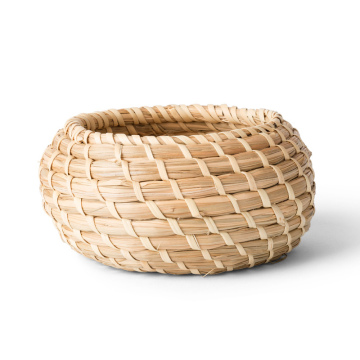Japanese Comfort Food
In the world of culinary traditions, comfort food holds a significant place, particularly within Japanese culture. This form of cuisine transcends mere sustenance; it encapsulates emotional reassurance, nostalgia, and cultural identity. For many Japanese people, food is a conduit for connection—not only to their own heritage but also to family and community. The embrace of comforting dishes signifies an acknowledgment of shared experiences and collective history, making them integral to day-to-day life.
Japanese comfort food often embodies warmth, both in flavor and in emotional significance. Meals such as ramen and rice bowls serve as a reflection of this sentiment. Ramen, with its rich broth and diverse toppings, is more than just a quick meal; it is a staple that evokes memories of family gatherings and late-night culinary adventures. Conversely, rice bowls can be personalized to individual tastes, yet they still carry a communal aspect that resonates deeply with those who enjoy them. Together, these dishes create a tapestry of flavors that represent both the simplicity and complexity of comfort within Japanese food culture.
Moreover, comfort food in Japan often aligns with the changing seasons and local ingredients, further embedding it within the socio-cultural fabric. This adaptability inherent in Japanese comfort food demonstrates its significance in nurturing the spirit, regardless of the circumstances. By bridging the gap between past and present, these meals offer a unique glimpse into Japanese values surrounding food—namely, the importance of mindfulness, sharing, and connection. In exploring specific dishes later in this blog post, the central role they play in fostering a sense of warmth and belonging becomes abundantly clear.
Exploring Ramen: A Bowl of Dreams
Ramen, often hailed as a quintessential Japanese dish, boasts an intriguing history that intertwines with cultural evolution and culinary innovation. Originating from Chinese wheat noodles, ramen transformed into a beloved comfort food in Japan following its introduction in the early 20th century. Over the decades, it has diversified into various regional styles, each with unique flavors, ingredients, and methods of preparation, showcasing the adaptability of this dish to local tastes and preferences.
Among the many varieties, shoyu (soy sauce) ramen stands out with its savory broth complemented by rich flavors, while miso ramen offers a hearty, fermented twist, ideal for colder seasons. Tonkotsu ramen, characterized by its creamy, pork-bone broth, represents the dedication to rich, umami flavors that many aficionados appreciate. Each bowl serves not just as a meal but as an experience, with toppings such as sliced chashu (braised pork), ajitama (marinated soft-boiled eggs), and menma (bamboo shoots) contributing to the dish's depth.
Ramen’s significance extends beyond its culinary aspects; it plays a vital role in social gatherings and bonding moments. Ramen shops are commonplace in Japan, often filled with patrons enjoying their bowls in a communal and informal setting. This atmosphere fosters connections, invoking nostalgia as families and friends gather to share their favorite variations. The portrayal of ramen in popular media, including anime and films, has further cemented its status as a symbol of comfort and dreams, exemplifying how food can evoke strong emotional responses.
In essence, ramen represents more than nourishment; it embodies the heart of Japanese comfort cooking, a celebration of flavors, traditions, and shared experiences. Each bowl encapsulates the dreams and aspirations of those who prepare, serve, and savor it, ensuring that ramen remains a beloved staple within and beyond Japan.
The Comfort of Rice Bowls: An Everyday Staple
Rice bowls, commonly referred to as 'donburi' in Japanese cuisine, represent a significant facet of comfort cooking in Japan. These versatile dishes consist of a base of rice topped with various ingredients, and they cater to a wide range of tastes and preferences. Consequently, donburi has become a beloved option for both daily meals and special gatherings. The simplicity of rice bowls allows them to be easily prepared and enjoyed, making them an everyday staple in many households.
Among the various types of donburi, gyudon, katsudon, and chirashi stand out as quintessential examples. Gyudon, or beef bowl, features tender marinated slices of beef simmered in a sweet soy sauce and served atop a steaming bed of rice. This dish embodies comfort through its warm flavors and satisfying texture, making it a popular choice on chilly days. Katsudon, on the other hand, presents a crispy pork cutlet, which is battered and fried, then layered over rice, and garnished with eggs and onions. This combination creates a balance of crunch and softness that resonates deeply with those seeking comfort food.
Chirashi, or scattered sushi bowl, diverges slightly from the more traditional donburi by showcasing a colorful assortment of fresh sashimi, vegetables, and pickles on a bed of sushi rice. This variation highlights the artistry of Japanese cuisine and emphasizes the importance of seasonal ingredients. Different regions in Japan also boast their unique takes on donburi, illustrating the local ingredients and culinary traditions that shape the country's food culture.
The communal aspect of rice bowls fosters a sense of togetherness, as families often gather around the table to share these comforting meals. The ease of preparation and the opportunities for customization encourage individuals to express their culinary creativity while indulging in the warmth that donburi brings to everyday life.
Creating Your Own Japanese Comfort Food Experience
Recreating the comforting experience of Japanese comfort food, particularly ramen and rice bowls, in your own kitchen can be a fulfilling and enjoyable endeavor. To begin, it is essential to stock your pantry with high-quality, authentic ingredients that form the foundation of these dishes. Key ingredients for ramen include ramen noodles, dashi (a flavorful broth), soy sauce, miso paste, and a variety of toppings such as sliced pork, scallions, boiled eggs, and nori. For rice bowls, short-grain rice, soy sauce, mirin, and fresh vegetables are vital. When selecting ingredients, opt for fresh produce and high-quality sources to enhance the overall flavor profile of your meals.
Cooking techniques are equally important in creating these culinary delights. For instance, making the perfect ramen broth can be a labor of love, requiring time to simmer bones and aromatics to achieve depth and richness. However, beginners can easily use store-bought broth as a shortcut while still adding personal touches like garlic, ginger, and sesame oil to enhance flavors. Rice bowls can be prepared quickly, making them an excellent option for busy weeknights. By mastering the art of seasoning and cooking rice, along with achieving the right balance of flavors and textures, anyone can create a satisfying meal.
To further personalize your Japanese comfort food experience, consider incorporating family recipes or cultural influences. Many individuals have cherished memories associated with these dishes, which can serve as inspiration for your culinary creations. Engaging with your own culinary history by tweaking traditional recipes to suit your tastes, such as incorporating seasonal vegetables or different proteins, not only enhances the cooking experience but also deepens the connection to the food. Ultimately, exploring and experimenting with Japanese comfort cooking opens the door to a world of flavors that can provide warmth and satisfaction within your own home.











